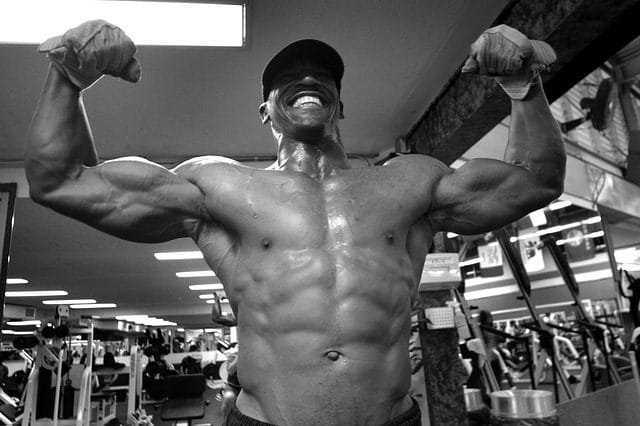Focus on These 3 Things for Guaranteed Muscle Gains
It seems these days that people are getting away from the basics in hopes of getting a different result with their training. The fact of the matter is, there are still three things you need in order to maximize muscle gains. Regardless of how you split a hair, getting away from these principles will slow down your progress and halt your muscle growth potential.
Disclaimer: This article is for informational purposes only and is not meant to treat or diagnose any condition. It is recommended that you speak with your doctor before starting any exercise program, changing your daily nutrition, or adding any supplements to your regimen.
Table of contents

How Long Does It Take to See Muscle Gains?
The time it takes to see noticeable muscle gains can vary significantly from person to person based on several factors. These factors include genetics, individual response to exercise, diet, consistency, and the type of workout program. Here are some general guidelines:
- Genetics: Genetic factors play a role in how quickly individuals can build muscle. Some people may naturally gain muscle more quickly than others.
- Consistency: Consistency is key when it comes to building muscle. Regular and consistent exercise, along with a proper diet, is essential. It’s not just about how hard you work out on a single day, but the cumulative effect of consistent effort over time.
- Intensity and Type of Exercise: The type of exercise and its intensity can influence how quickly you see results. Resistance training, including weightlifting, is effective for building muscle. Progressive overload, where you gradually increase the resistance or intensity of your workouts, is crucial for continued gains.
- Nutrition: Proper nutrition is essential for muscle growth. Consuming enough protein, carbohydrates, and healthy fats supports muscle repair and growth. Protein, in particular, is crucial for muscle synthesis.
- Rest and Recovery: Muscles need time to recover and grow. Overtraining can be counterproductive. Ensure you get enough sleep and allow your muscles to rest between workouts.
- Individual Response: Everyone responds differently to exercise and nutrition. Some individuals may see noticeable gains in a few weeks, while others may take longer.
In general, you may start to notice some changes within a few weeks to a couple of months of consistent training. However, significant muscle gains typically take several months to a year or more. It’s important to set realistic expectations and focus on the long-term process rather than expecting immediate results.
It’s also worth noting that as you progress, the rate of muscle growth may slow down. This is normal, and patience is crucial in the journey of building and maintaining muscle mass. Additionally, factors like age, hormonal levels, and overall health can also influence the rate of muscle development.
What Are Realistic Muscle Gains Over a Span of 12 Months?

Realistic muscle gains over a span of 12 months can vary widely depending on individual factors, such as genetics, training experience, diet, and consistency. However, here are some general guidelines for what might be considered achievable for individuals engaging in a well-structured resistance training program:
- Beginners: Those who are relatively new to resistance training and have not yet optimized their muscle-building potential may experience more rapid gains, especially in the initial months. It’s not uncommon for beginners to gain around 1-2 pounds (0.45-0.9 kg) of muscle per month during the first year of consistent training.
- Intermediate to Advanced: As individuals progress and move beyond the beginner stage, the rate of muscle gain tends to slow down. Intermediate and advanced lifters may see gains in the range of 0.5-1 pound (0.23-0.45 kg) per month. Keep in mind that the closer one gets to their genetic potential, the slower the rate of muscle growth becomes.
- Genetic Factors: Genetics play a significant role in determining how much muscle an individual can gain. Some people may be genetically predisposed to build muscle more quickly than others.
It’s essential to understand that these are general estimates, and individual results can vary. Other factors, such as diet, recovery, sleep, and overall health, also play crucial roles in the muscle-building process. Additionally, factors like age and hormonal levels can influence the rate of muscle development.
Consistency in training, proper nutrition, and allowing adequate time for recovery are key components in maximizing muscle gains. It’s also important to note that focusing solely on the scale may not provide a complete picture of progress, as changes in body composition (increased muscle mass and decreased body fat) may not always be reflected in overall body weight.
Setting realistic expectations and recognizing that muscle-building is a gradual process is crucial for long-term success.
These 3 Tips Can Help Improve Your Muscle Gains

Give the three tips and strategies found below a try if you want to maximize your muscle gains.
1. Get enough rest
I’m starting this off with rest and for a good reason, if you don’t get enough of it to help you fully recover from training, you will limit your potential to maximize muscle gains. All of the time in the gym means absolutely nothing if you aren’t allowing the torn down muscle fibers the ability to rebuild and repair to come back bigger and stronger.
What this means is that you should be striving for a minimum of seven hours of quality sleep each night. On top of sleep, you want to give each body part enough rest to fully recover before hitting it again in the gym. This means giving the muscle a solid 24-48 hours (minimum) before you decided to work that muscle group again in the gym.
You can’t maximize muscle gains if you aren’t allowing the muscle to fully recover between training sessions. If you hit the muscle group too early, you risk simply breaking down the muscle again without it recovering first and becoming stronger.
2. Eat enough calories
They say you need to eat big in order to get big, but unfortunately, for too many people that resembles a “dirty bulk” where they consume anything and everything in order to put on size and see muscle gains. While they do indeed put on size, it’s unfortunately, a lot of body fat which they later would need to work off.

The best thing you can do is track your calories using something like MyFitnessPal as well as watching the scale and your body fat percentage. If you find you’re putting on body fat, lower the calories while still being in a surplus and evaluate in the coming weeks. If you aren’t gaining anything, increase your calories anywhere from 250-500 per day and see how the numbers look after a couple weeks.
When it comes to the foods you should be consuming, try to keep them as clean as possible. Remember, if you eat junk, the likelihood of you putting on body fat is high. Consume your lean protein sources along with complex and fibrous carbohydrates and don’t forget to include healthy fats as well. The combination of these precise macronutrients can help maximize muscle gains, minimize fat gain, and improve hormone levels which can prime your body to stimulate new muscle growth and proper functioning of not only the muscles but the brain as well.
3. Stimulate and break down muscle fibers
Notice how I didn’t say “lift heavy” in the heading? Sure, you don’t want to sandbag it while in the gym, but that also doesn’t mean you need to throw around super heavy weight either. What you should be focusing on is using a weight that is heavy enough for you to use in a slow and controlled motion. You want to squeeze each rep intensely and forgo the use of any body English which will transfer some of the weight during the movement to other body parts (other than the one you are focusing on).
At the end of the day, you want to stimulate the muscle fibers and break them down so that they can be fed and well rested to enhance hypertrophy. One thing to take into account is the fact that everyone is different. What works for me might not work for you and vice versa. You might need to go heavy and with a lower rep range around eight whereas I might be able to get the same results by using a lighter weight and going as high as 12 reps per set. The only way you will find out what is best for you is trial and error.
If maximizing muscle gains was a simple feat, we would see more jacked and ripped people walking around in the world rather than watching the obesity epidemic getting worse with each passing year.


*Disclosure: This article may contain affiliate links or ads, which means we earn a small commission at no extra cost to you if you make a purchase through these links. These commissions help support the operation and maintenance of our website, allowing us to continue producing free valuable content. Your support is genuinely appreciated, whether you choose to use our links or not. Thank you for being a part of our community and enjoying our content.
PLEASE CONSIDER SHARING THIS ON YOUR SOCIAL MEDIA TO HELP OTHERS LEARN MORE ABOUT THIS TOPIC.





